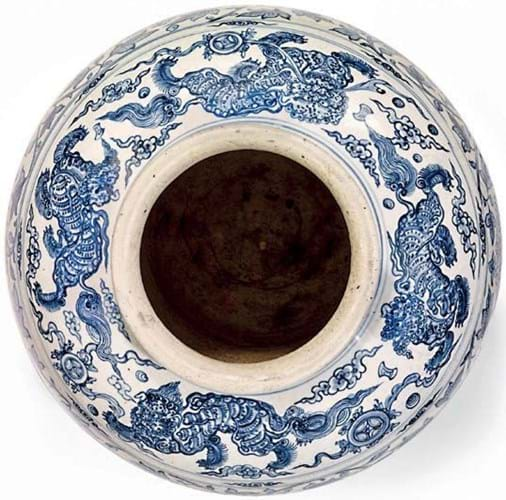It came for sale from a Dutch collection with an estimate of €15,000-20,000.
Two key events spurred the development of the Vietnamese ceramic industry in the 15th century – the Chinese annexation of Vietnam from 1407-28 and the imperial ban on ceramic exports from 1436-65.
Ironically, it was during occupation by the Ming that blue-and-white technology was first introduced to Vietnam. In turn, the 30-year prohibition on the china trade that followed provided the stimulus for the Vietnamese potters to hone their skills at a time of high demand but little direct competition.
Yuan and Ming prototypes provide the forms and decoration for Vietnamese blue and white. However, these were not simply slavish copies. In addition to a noticeably heavier body (these are stonewares rather than porcelain), both brushwork and decorative motifs help differentiate early Vietnamese porcelain from its Chinese counterparts.
This 13in (33cm) high jar shares the same peony scrolls and buddhist lions decoration as another once owned by John D Rockefeller and now in the collection of the Asia Society. Similar shards have been excavated at the Ngoi and Chu Dao kiln sites. It was consigned by the family of JE Hagen (1904-76), a Dutch colonial civil servant who had received it as a gift in 1947 when working in Indonesia.
The price (€406,000 including buyer’s premium) at the auction on June 23 takes Vietnamese ceramics into new territory. In December 2017 a massive 2ft 10in (84cm) blue and white storage jar with moulded animal masks handles dated to the 15th or 16th century sold for $100,000 at Bonhams in San Francisco.
















